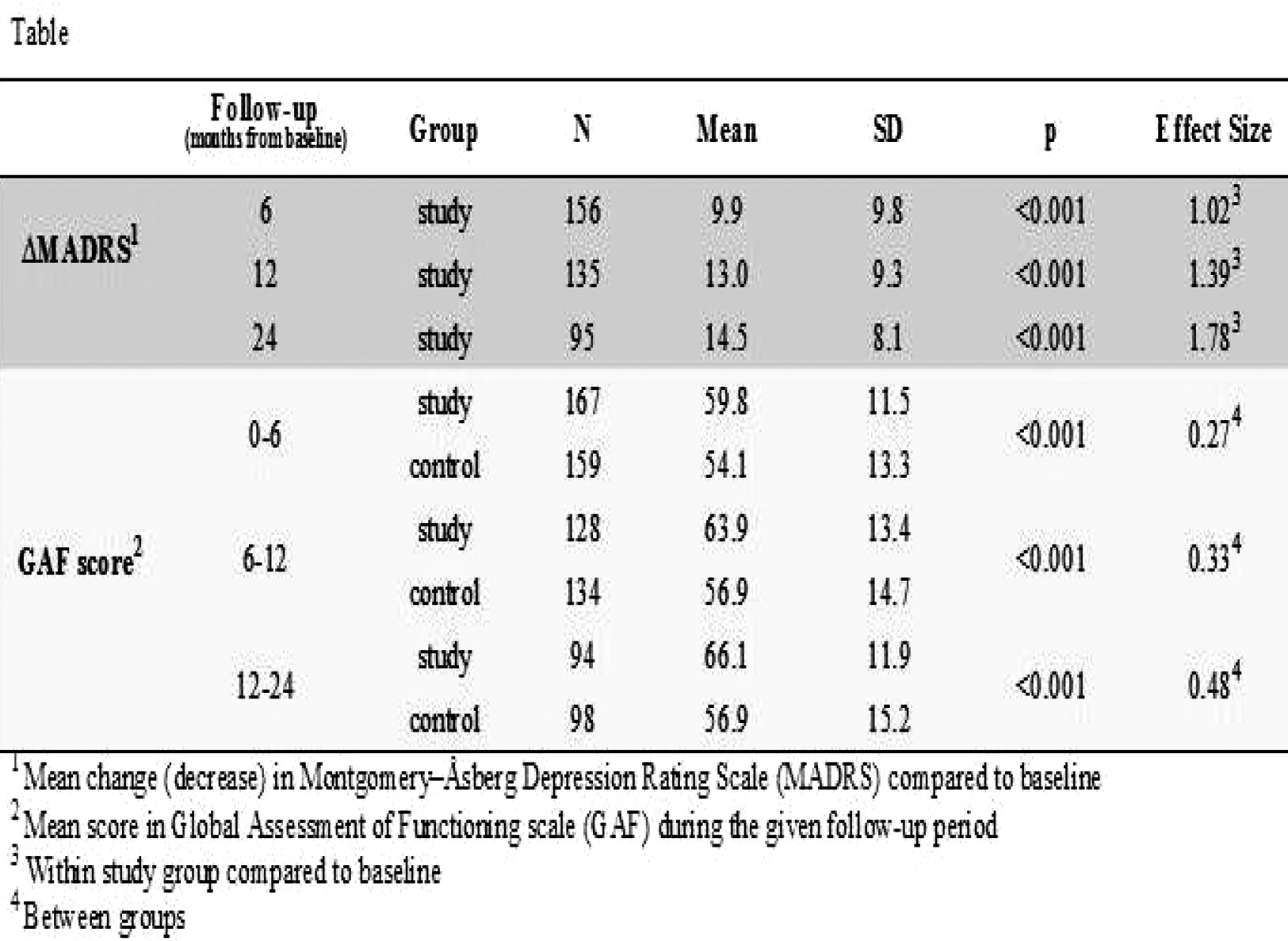No CrossRef data available.
Article contents
Comparison of behavioral activation therapy and treatment as usual among depressed patients in secondary psychiatric care
Published online by Cambridge University Press: 23 March 2020
Abstract
Evidence-based brief therapies are needed to reduce a marked heterogeneity affecting treatment of depression within the public psychiatric care. They should be easy to implement and use for a large group of patients.
To develop and implement an effective brief treatment protocol for depressed patients treated in public psychiatric secondary care.
To explore and compare the outcome of depressed patients receiving either behavioral activation therapy (BA) or treatment as usual (TAU).
Two hundred and forty two depressive patients referred to adult public secondary psychiatric care formed the BA treated study group. The TAU treated control group (n = 205) was collected from the hospital districts database and matched by the hospitalization rate, Alcohol Use Disorders Identification Test (AUDIT) and Beck Depression Inventory (BDI). All patients received anti-depressive medications. In the study group, Montgomery–Åsberg Depression Rating Scale (MADRS) was conducted four times within 24 months follow-up. In both groups, the ability of functioning was controlled by Global Assessment of Functioning scale (GAF).
In the study group, depressive symptoms alleviated systematically and significantly during follow-up (Table 1). The improvement in GAF scores was significantly better in the study group throughout the follow-up (Table 1).
BA can be implemented and used effectively for depressive patients in public psychiatric secondary care. BA is superior to TAU in terms of functional recovery.
Table 1
1Mean change (decrease) in Montgomery–Åsberg Depression Rating Scale (MADRS) compared to baseline.
2Mean score in Global Assessment of Functioning scale (GAF) during the given follow-up period.
3Within study groups compared to baseline.
4Between groups.
The authors have not supplied their declaration of competing interest.
- Type
- e-Poster viewing: Cultural psychiatry
- Information
- European Psychiatry , Volume 41 , Issue S1: Abstract of the 25th European Congress of Psychiatry , April 2017 , pp. S532
- Copyright
- Copyright © European Psychiatric Association 2017



Comments
No Comments have been published for this article.